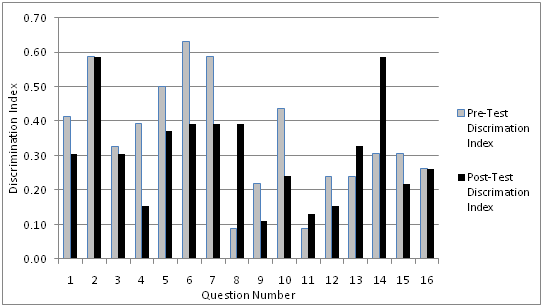Effective assessment is a cornerstone in measuring student learning in higher education. For a course in Numerical Methods, a concept test was used as an assessment tool to measure student learning and its improvement during the course.

The concept test comprised of 16-multiple-choice questions and was given in the beginning and end of the class for three semesters. Hake’s gain index, a measure of learning gains from pre-test to post-test, of 0.36 to 0.41 were recorded. The validity and reliability of the concept test were checked via standard measures such as Cronbach alpha, content and criterion-related validity, item characteristic curves, and difficulty and discrimination indices. The performance of various subgroups such as pre-requisite grades, transfer students, gender, and age was also studied. Our analysis also shows that certain subgroups’ performance in the pre- and post-concept test is significantly better than others. For example, students with prerequisite GPA≥3.0 perform better than those with prerequisite GPA<3.0, and non-adult students perform better than adult students do.
Table. Student performance in pre- and post-concept test over three semesters
| Semester | Average Number of Correct Answers in Pre-test(mean/st.dev.) | Average Number of Correct Answers in Post-test (mean/st.dev.) | Hake’s Gain Index |
| Spring 2008 | 8.2/2.4 | 11.0/2.7 | 0.36 |
| Spring 2009 | 8.3/3.5 | 11.6/3.9 | 0.43 |
| Spring 2010 | 9.2/2.6 | 12.0/2.2 | 0.41 |
Related Papers
A. Kaw, A. Yalcin, “Measuring Student Learning Using Initial and Final Concept Test in a STEM Course”, International Journals of Mathematics Education in Science and Technology.
